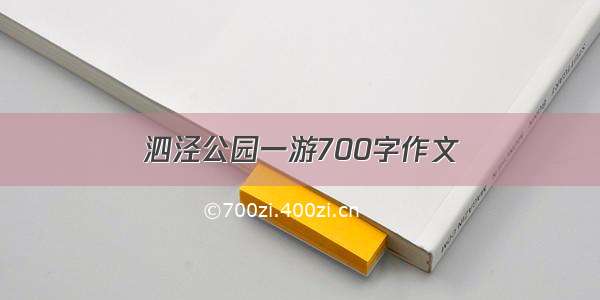
1.背景介绍
目标检测是很多计算机视觉应用的基础,比如实例分割等,它结合了目标分类和定位两个任务。
深度学习用于目标检测的算法从思路上来看,可以分为两大类,一类是two stage的方法,也就是把整个分为两部分,生成候选框和识别框内物体,例如R-CNN系列;另一类是one stage的方法,把整个流程统一在一起,直接给出检测结果,主要包含SSD,YOLO系列。
目标检测的backbone一般基于ImageNet预训练的图像分类网络。图像分类问题只关注分类和感受视野,不用关注物体定位,但是目标检测领域同时很关注空间信息。如果下采样过多,会导致最后的feature map很小,小目标很容易漏掉。很多基础架构网络,比如ResNet、FPN等神经网络提取图像的上下文信息,不断在特征提取方向优化。
2.YOLO网络
YOLO是单阶段方法的开山之作。它将检测任务表述成一个统一的、端到端的回归问题,并且以只处理一次图片同时得到位置和分类而得名。
YOLOV1是典型的目标检测one stage方法,用回归的方法去做目标检测,执行速度快,达到非常高效的检测。YOLOV1的基本思想是把一副图片,首先reshape成448×448大小(由于网络中使用了全连接层,所以图片的尺寸需固定大小输入到CNN中),然后将划分成SxS个单元格(原文中S=7),如果目标中心点在某个单元格内,该单元格就负责预测该目标。输出层的大小为7x7,通道数为30。7x7可以看作将原图分为7x7的网格,而每个格子中有30个数。这三十个数分别对应了两组(意味着每个网格尝试着预测两个边界框)的“位置信息+置信度”以及20个类别(VOC数据集中有20个类别)。
YOLOV2,选择了5个锚作为召回率和模型复杂度之间的良好折衷。其关键特点:
1)Batch Normalization: YOLOv1没有使用BN层,而YOLOv2在每一层卷积层后都使用了BN层,BN层通过训练数据学习每一层每个神经元的缩放比例,进行标准化。BN层可以帮助网络进行训练,原论文指出,卷积层加了BN层后就可以不用dropout了,使用BN层后可以提高2%的mAP。顺便一提的是,卷积层后加了BN层时,卷积层可以不使用偏置值。
2)High Resolution Classifier: 对YOLOV2,预训练之后,在ImageNet数据集上,用448*448大小的图片对分类网络进行微调,大约10个epoches,其目的是让网络先学习一下高分辨率的图片,之后再应用到检测网络中,这个举措使得mAP提升大概4%。
3)Convolutional With Anchor Boxes: YOLOv1并没有使用锚点,而是直接预测x,y,w,h,且每个网格预测两个边界框的形式总觉得很奇怪(因为同一个网格中的两个边界框并没有什么不同)。而YOLOv2引用了Faster RCNN和SSD模型中的锚点,预测的位置是相对预置的锚点的。论文指出通过使用锚点,mAP下降了0.3%的mAP,但是召回率增加了7%,虽然mAP下降了,但是更高的召回率意味着模型的上限更高。
4)Dimension Cluster: 对网络来说,如果能够选择合适的anchor尺寸,网络更加容易学习并且预测出更好的结果,在论文中作者使用k-means算法在训练集上的边界框中自动选择合适的box dimensions。
5)Direct location prediction: 作者在论文中提到,需要对x,y,w,h进行归一化(在输出层代表位置信息的部分使用sigmoid激活函数)。此外,置信度同样也需要进行归一化(输出层代码置信度的位置加sigmoid激活函数)。这样可以是的网络在训练过程中更加稳定。通过Dimension Clusters和Direct location prediction可以使模型提高5%的mAP。
6)Fine-Grained Features:在13*13特征图上进行目标检测,对于一些大的目标是足够的,但是对于小物体的检测还需要细粒度的特征,为此YOLOV2添加一个passthrough layer,将浅层的特征和深层的特征,两个不同尺寸的特征按通道维度拼接起来。值得一提的是,原论文中,作者写的是PassThrough层将26x26x512的特征图变为13x13x2048的特征图,但是实际上,在作者的代码实现中,在PassThrough层前使用了1x1的卷积将512维的通道数减少到了64维。因此,实际上,PassThrough层的输入为26x26x64,输出为13x13x256。而YOLOv2的最终网络结构如8-6所示。
7) Multi-Scale training:从上面的结构图可以看到,YOLOv2相比YOLOv1,去掉了全连接层,所有带参数的网络层均为卷积层和BN层(在表格中没画出来,每个卷积层后面都会跟一个BN层)。卷积层和BN层都不会受到输入图像大小的影响(如果网络有全连接层,输入图像的大小必须是一致的)。因此,作者提出,在训练模型时可以使用不同尺度的图像进行训练来保证模型对大目标和小目标都能达到不错的效果。由于网络的输入图像的大小为输出大小的32倍,因此,作者使用了多个尺寸为32倍数的图像对网络进行训练。输入图像的大小为{320,352,...,608},每十个batch换一组尺寸。
YOLOv3相比YOLOv2最大的改进点在于借鉴了SSD的多尺度判别,即在不同大小的特征图上进行预测。对于网络前几层的大尺寸特征图,可以有效地检测出小目标,对于网络最后的小尺寸特征图可以有效地检测出大目标。此外,YOLOv3的backbone选择了DarkNet53网络,网络结构更深,特征提取能力更强了。
YOLOv3的网络结构如下图所示,左侧中的红色框部分为去掉输出层的DarkNet53网络:
3.定义网络
%%writefile ./code/src/yolov3.py"""YOLOv3 based on ResNet18."""import numpy as npimport mindspore as msimport mindspore.nn as nnfrom mindspore import context, Tensorfrom mindspore.context import ParallelModefrom mindspore.parallel._auto_parallel_context import auto_parallel_contextfrom munication.management import get_group_sizefrom mon.initializer import TruncatedNormalfrom mindspore.ops import operations as Pfrom mindspore.ops import functional as Ffrom mindspore.ops import composite as Cdef weight_variable():"""Weight variable."""return TruncatedNormal(0.02)class _conv2d(nn.Cell):"""Create Conv2D with padding."""def __init__(self, in_channels, out_channels, kernel_size, stride=1):super(_conv2d, self).__init__()self.conv = nn.Conv2d(in_channels, out_channels,kernel_size=kernel_size, stride=stride, padding=0, pad_mode='same',weight_init=weight_variable())def construct(self, x):x = self.conv(x)return xdef _fused_bn(channels, momentum=0.99):"""Get a fused batchnorm."""return nn.BatchNorm2d(channels, momentum=momentum)def _conv_bn_relu(in_channel,out_channel,ksize,stride=1,padding=0,dilation=1,alpha=0.1,momentum=0.99,pad_mode="same"):"""Get a conv2d batchnorm and relu layer."""return nn.SequentialCell([nn.Conv2d(in_channel,out_channel,kernel_size=ksize,stride=stride,padding=padding,dilation=dilation,pad_mode=pad_mode),nn.BatchNorm2d(out_channel, momentum=momentum),nn.LeakyReLU(alpha)])class BasicBlock(nn.Cell):"""ResNet basic block.Args:in_channels (int): Input channel.out_channels (int): Output channel.stride (int): Stride size for the initial convolutional layer. Default:1.momentum (float): Momentum for batchnorm layer. Default:0.1.Returns:Tensor, output tensor.Examples:BasicBlock(3,256,stride=2,down_sample=True)."""expansion = 1def __init__(self,in_channels,out_channels,stride=1,momentum=0.99):super(BasicBlock, self).__init__()self.conv1 = _conv2d(in_channels, out_channels, 3, stride=stride)self.bn1 = _fused_bn(out_channels, momentum=momentum)self.conv2 = _conv2d(out_channels, out_channels, 3)self.bn2 = _fused_bn(out_channels, momentum=momentum)self.relu = P.ReLU()self.down_sample_layer = Noneself.downsample = (in_channels != out_channels)if self.downsample:self.down_sample_layer = _conv2d(in_channels, out_channels, 1, stride=stride)self.add = P.Add()def construct(self, x):identity = xx = self.conv1(x)x = self.bn1(x)x = self.relu(x)x = self.conv2(x)x = self.bn2(x)if self.downsample:identity = self.down_sample_layer(identity)out = self.add(x, identity)out = self.relu(out)return outclass ResNet(nn.Cell):"""ResNet network.Args:block (Cell): Block for network.layer_nums (list): Numbers of different layers.in_channels (int): Input channel.out_channels (int): Output channel.num_classes (int): Class number. Default:100.Returns:Tensor, output tensor.Examples:ResNet(ResidualBlock,[3, 4, 6, 3],[64, 256, 512, 1024],[256, 512, 1024, 2048],100)."""def __init__(self,block,layer_nums,in_channels,out_channels,strides=None,num_classes=80):super(ResNet, self).__init__()if not len(layer_nums) == len(in_channels) == len(out_channels) == 4:raise ValueError("the length of ""layer_num, inchannel, outchannel list must be 4!")self.conv1 = _conv2d(3, 64, 7, stride=2)self.bn1 = _fused_bn(64)self.relu = P.ReLU()self.maxpool = nn.MaxPool2d(kernel_size=3, stride=2, pad_mode='same')self.layer1 = self._make_layer(block,layer_nums[0],in_channel=in_channels[0],out_channel=out_channels[0],stride=strides[0])self.layer2 = self._make_layer(block,layer_nums[1],in_channel=in_channels[1],out_channel=out_channels[1],stride=strides[1])self.layer3 = self._make_layer(block,layer_nums[2],in_channel=in_channels[2],out_channel=out_channels[2],stride=strides[2])self.layer4 = self._make_layer(block,layer_nums[3],in_channel=in_channels[3],out_channel=out_channels[3],stride=strides[3])self.num_classes = num_classesif num_classes:self.reduce_mean = P.ReduceMean(keep_dims=True)self.end_point = nn.Dense(out_channels[3], num_classes, has_bias=True,weight_init=weight_variable(),bias_init=weight_variable())self.squeeze = P.Squeeze(axis=(2, 3))def _make_layer(self, block, layer_num, in_channel, out_channel, stride):"""Make Layer for ResNet.Args:block (Cell): Resnet block.layer_num (int): Layer number.in_channel (int): Input channel.out_channel (int): Output channel.stride (int): Stride size for the initial convolutional layer.Returns:SequentialCell, the output layer.Examples:_make_layer(BasicBlock, 3, 128, 256, 2)."""layers = []resblk = block(in_channel, out_channel, stride=stride)layers.append(resblk)for _ in range(1, layer_num - 1):resblk = block(out_channel, out_channel, stride=1)layers.append(resblk)resblk = block(out_channel, out_channel, stride=1)layers.append(resblk)return nn.SequentialCell(layers)def construct(self, x):x = self.conv1(x)x = self.bn1(x)x = self.relu(x)c1 = self.maxpool(x)c2 = self.layer1(c1)c3 = self.layer2(c2)c4 = self.layer3(c3)c5 = self.layer4(c4)out = c5if self.num_classes:out = self.reduce_mean(c5, (2, 3))out = self.squeeze(out)out = self.end_point(out)return c3, c4, outdef resnet18(class_num=10):"""Get ResNet18 neural network.Args:class_num (int): Class number.Returns:Cell, cell instance of ResNet18 neural network.Examples:resnet18(100)."""return ResNet(BasicBlock,[2, 2, 2, 2],[64, 64, 128, 256],[64, 128, 256, 512],[1, 2, 2, 2],num_classes=class_num)class YoloBlock(nn.Cell):"""YoloBlock for YOLOv3.Args:in_channels (int): Input channel.out_chls (int): Middle channel.out_channels (int): Output channel.Returns:Tuple, tuple of output tensor,(f1,f2,f3).Examples:YoloBlock(1024, 512, 255)."""def __init__(self, in_channels, out_chls, out_channels):super(YoloBlock, self).__init__()out_chls_2 = out_chls * 2self.conv0 = _conv_bn_relu(in_channels, out_chls, ksize=1)self.conv1 = _conv_bn_relu(out_chls, out_chls_2, ksize=3)self.conv2 = _conv_bn_relu(out_chls_2, out_chls, ksize=1)self.conv3 = _conv_bn_relu(out_chls, out_chls_2, ksize=3)self.conv4 = _conv_bn_relu(out_chls_2, out_chls, ksize=1)self.conv5 = _conv_bn_relu(out_chls, out_chls_2, ksize=3)self.conv6 = nn.Conv2d(out_chls_2, out_channels, kernel_size=1, stride=1, has_bias=True)def construct(self, x):c1 = self.conv0(x)c2 = self.conv1(c1)c3 = self.conv2(c2)c4 = self.conv3(c3)c5 = self.conv4(c4)c6 = self.conv5(c5)out = self.conv6(c6)return c5, outclass YOLOv3(nn.Cell):"""YOLOv3 Network.Note:backbone = resnet18.Args:feature_shape (list): Input image shape, [N,C,H,W].backbone_shape (list): resnet18 output channels shape.backbone (Cell): Backbone Network.out_channel (int): Output channel.Returns:Tensor, output tensor.Examples:YOLOv3(feature_shape=[1,3,416,416],backbone_shape=[64, 128, 256, 512, 1024]backbone=darknet53(),out_channel=255)."""def __init__(self, feature_shape, backbone_shape, backbone, out_channel):super(YOLOv3, self).__init__()self.out_channel = = backboneself.backblock0 = YoloBlock(backbone_shape[-1], out_chls=backbone_shape[-2], out_channels=out_channel)self.conv1 = _conv_bn_relu(in_channel=backbone_shape[-2], out_channel=backbone_shape[-2]//2, ksize=1)self.upsample1 = P.ResizeNearestNeighbor((feature_shape[2]//16, feature_shape[3]//16))self.backblock1 = YoloBlock(in_channels=backbone_shape[-2]+backbone_shape[-3],out_chls=backbone_shape[-3],out_channels=out_channel)self.conv2 = _conv_bn_relu(in_channel=backbone_shape[-3], out_channel=backbone_shape[-3]//2, ksize=1)self.upsample2 = P.ResizeNearestNeighbor((feature_shape[2]//8, feature_shape[3]//8))self.backblock2 = YoloBlock(in_channels=backbone_shape[-3]+backbone_shape[-4],out_chls=backbone_shape[-4],out_channels=out_channel)self.concat = P.Concat(axis=1)def construct(self, x):# input_shape of x is (batch_size, 3, h, w)# feature_map1 is (batch_size, backbone_shape[2], h/8, w/8)# feature_map2 is (batch_size, backbone_shape[3], h/16, w/16)# feature_map3 is (batch_size, backbone_shape[4], h/32, w/32)feature_map1, feature_map2, feature_map3 = (x)con1, big_object_output = self.backblock0(feature_map3)con1 = self.conv1(con1)ups1 = self.upsample1(con1)con1 = self.concat((ups1, feature_map2))con2, medium_object_output = self.backblock1(con1)con2 = self.conv2(con2)ups2 = self.upsample2(con2)con3 = self.concat((ups2, feature_map1))_, small_object_output = self.backblock2(con3)return big_object_output, medium_object_output, small_object_outputclass DetectionBlock(nn.Cell):"""YOLOv3 detection Network. It will finally output the detection result.Args:scale (str): Character, scale.config (Class): YOLOv3 config.Returns:Tuple, tuple of output tensor,(f1,f2,f3).Examples:DetectionBlock(scale='l',stride=32)."""def __init__(self, scale, config):super(DetectionBlock, self).__init__()self.config = configif scale == 's':idx = (0, 1, 2)elif scale == 'm':idx = (3, 4, 5)elif scale == 'l':idx = (6, 7, 8)else:raise KeyError("Invalid scale value for DetectionBlock")self.anchors = Tensor([self.config.anchor_scales[i] for i in idx], ms.float32)self.num_anchors_per_scale = 3self.num_attrib = 4 + 1 + self.config.num_classesself.ignore_threshold = 0.5self.lambda_coord = 1self.sigmoid = nn.Sigmoid()self.reshape = P.Reshape()self.tile = P.Tile()self.concat = P.Concat(axis=-1)self.input_shape = Tensor(tuple(config.img_shape[::-1]), ms.float32)def construct(self, x):num_batch = P.Shape()(x)[0]grid_size = P.Shape()(x)[2:4]# Reshape and transpose the feature to [n, 3, grid_size[0], grid_size[1], num_attrib]prediction = P.Reshape()(x, (num_batch,self.num_anchors_per_scale,self.num_attrib,grid_size[0],grid_size[1]))prediction = P.Transpose()(prediction, (0, 3, 4, 1, 2))range_x = range(grid_size[1])range_y = range(grid_size[0])grid_x = P.Cast()(F.tuple_to_array(range_x), ms.float32)grid_y = P.Cast()(F.tuple_to_array(range_y), ms.float32)# Tensor of shape [grid_size[0], grid_size[1], 1, 1] representing the coordinate of x/y axis for each gridgrid_x = self.tile(self.reshape(grid_x, (1, 1, -1, 1, 1)), (1, grid_size[0], 1, 1, 1))grid_y = self.tile(self.reshape(grid_y, (1, -1, 1, 1, 1)), (1, 1, grid_size[1], 1, 1))# Shape is [grid_size[0], grid_size[1], 1, 2]grid = self.concat((grid_x, grid_y))box_xy = prediction[:, :, :, :, :2]box_wh = prediction[:, :, :, :, 2:4]box_confidence = prediction[:, :, :, :, 4:5]box_probs = prediction[:, :, :, :, 5:]box_xy = (self.sigmoid(box_xy) + grid) / P.Cast()(F.tuple_to_array((grid_size[1], grid_size[0])), ms.float32)box_wh = P.Exp()(box_wh) * self.anchors / self.input_shapebox_confidence = self.sigmoid(box_confidence)box_probs = self.sigmoid(box_probs)if self.training:return grid, prediction, box_xy, box_whreturn box_xy, box_wh, box_confidence, box_probsclass Iou(nn.Cell):"""Calculate the iou of boxes."""def __init__(self):super(Iou, self).__init__()self.min = P.Minimum()self.max = P.Maximum()def construct(self, box1, box2):box1_xy = box1[:, :, :, :, :, :2]box1_wh = box1[:, :, :, :, :, 2:4]box1_mins = box1_xy - box1_wh / F.scalar_to_array(2.0)box1_maxs = box1_xy + box1_wh / F.scalar_to_array(2.0)box2_xy = box2[:, :, :, :, :, :2]box2_wh = box2[:, :, :, :, :, 2:4]box2_mins = box2_xy - box2_wh / F.scalar_to_array(2.0)box2_maxs = box2_xy + box2_wh / F.scalar_to_array(2.0)intersect_mins = self.max(box1_mins, box2_mins)intersect_maxs = self.min(box1_maxs, box2_maxs)intersect_wh = self.max(intersect_maxs - intersect_mins, F.scalar_to_array(0.0))intersect_area = P.Squeeze(-1)(intersect_wh[:, :, :, :, :, 0:1]) * \P.Squeeze(-1)(intersect_wh[:, :, :, :, :, 1:2])box1_area = P.Squeeze(-1)(box1_wh[:, :, :, :, :, 0:1]) * P.Squeeze(-1)(box1_wh[:, :, :, :, :, 1:2])box2_area = P.Squeeze(-1)(box2_wh[:, :, :, :, :, 0:1]) * P.Squeeze(-1)(box2_wh[:, :, :, :, :, 1:2])iou = intersect_area / (box1_area + box2_area - intersect_area)return iouclass YoloLossBlock(nn.Cell):"""YOLOv3 Loss block cell. It will finally output loss of the scale.Args:scale (str): Three scale here, 's', 'm' and 'l'.config (Class): The default config of YOLOv3.Returns:Tensor, loss of the scale.Examples:YoloLossBlock('l', ConfigYOLOV3ResNet18())."""def __init__(self, scale, config):super(YoloLossBlock, self).__init__()self.config = configif scale == 's':idx = (0, 1, 2)elif scale == 'm':idx = (3, 4, 5)elif scale == 'l':idx = (6, 7, 8)else:raise KeyError("Invalid scale value for DetectionBlock")self.anchors = Tensor([self.config.anchor_scales[i] for i in idx], ms.float32)self.ignore_threshold = Tensor(self.config.ignore_threshold, ms.float32)self.concat = P.Concat(axis=-1)self.iou = Iou()self.cross_entropy = P.SigmoidCrossEntropyWithLogits()self.reduce_sum = P.ReduceSum()self.reduce_max = P.ReduceMax(keep_dims=False)self.input_shape = Tensor(tuple(config.img_shape[::-1]), ms.float32)def construct(self, grid, prediction, pred_xy, pred_wh, y_true, gt_box):object_mask = y_true[:, :, :, :, 4:5]class_probs = y_true[:, :, :, :, 5:]grid_shape = P.Shape()(prediction)[1:3]grid_shape = P.Cast()(F.tuple_to_array(grid_shape[::-1]), ms.float32)pred_boxes = self.concat((pred_xy, pred_wh))true_xy = y_true[:, :, :, :, :2] * grid_shape - gridtrue_wh = y_true[:, :, :, :, 2:4]true_wh = P.Select()(P.Equal()(true_wh, 0.0),P.Fill()(P.DType()(true_wh), P.Shape()(true_wh), 1.0),true_wh)true_wh = P.Log()(true_wh / self.anchors * self.input_shape)box_loss_scale = 2 - y_true[:, :, :, :, 2:3] * y_true[:, :, :, :, 3:4]gt_shape = P.Shape()(gt_box)gt_box = P.Reshape()(gt_box, (gt_shape[0], 1, 1, 1, gt_shape[1], gt_shape[2]))iou = self.iou(P.ExpandDims()(pred_boxes, -2), gt_box) # [batch, grid[0], grid[1], num_anchor, num_gt]best_iou = self.reduce_max(iou, -1) # [batch, grid[0], grid[1], num_anchor]ignore_mask = best_iou < self.ignore_thresholdignore_mask = P.Cast()(ignore_mask, ms.float32)ignore_mask = P.ExpandDims()(ignore_mask, -1)ignore_mask = F.stop_gradient(ignore_mask)xy_loss = object_mask * box_loss_scale * self.cross_entropy(prediction[:, :, :, :, :2], true_xy)wh_loss = object_mask * box_loss_scale * 0.5 * P.Square()(true_wh - prediction[:, :, :, :, 2:4])confidence_loss = self.cross_entropy(prediction[:, :, :, :, 4:5], object_mask)confidence_loss = object_mask * confidence_loss + (1 - object_mask) * confidence_loss * ignore_maskclass_loss = object_mask * self.cross_entropy(prediction[:, :, :, :, 5:], class_probs)# Get smooth lossxy_loss = self.reduce_sum(xy_loss, ())wh_loss = self.reduce_sum(wh_loss, ())confidence_loss = self.reduce_sum(confidence_loss, ())class_loss = self.reduce_sum(class_loss, ())loss = xy_loss + wh_loss + confidence_loss + class_lossreturn loss / P.Shape()(prediction)[0]class yolov3_resnet18(nn.Cell):"""ResNet based YOLOv3 network.Args:config (Class): YOLOv3 config.Returns:Cell, cell instance of ResNet based YOLOv3 neural network.Examples:yolov3_resnet18(80, [1,3,416,416])."""def __init__(self, config):super(yolov3_resnet18, self).__init__()self.config = config# YOLOv3 networkself.feature_map = YOLOv3(feature_shape=self.config.feature_shape,backbone=ResNet(BasicBlock,self.config.backbone_layers,self.config.backbone_input_shape,self.config.backbone_shape,self.config.backbone_stride,num_classes=None),backbone_shape=self.config.backbone_shape,out_channel=self.config.out_channel)# prediction on the default anchor boxesself.detect_1 = DetectionBlock('l', self.config)self.detect_2 = DetectionBlock('m', self.config)self.detect_3 = DetectionBlock('s', self.config)def construct(self, x):big_object_output, medium_object_output, small_object_output = self.feature_map(x)output_big = self.detect_1(big_object_output)output_me = self.detect_2(medium_object_output)output_small = self.detect_3(small_object_output)return output_big, output_me, output_smallclass YoloWithLossCell(nn.Cell):""""Provide YOLOv3 training loss through network.Args:network (Cell): The training network.config (Class): YOLOv3 config.Returns:Tensor, the loss of the network."""def __init__(self, network, config):super(YoloWithLossCell, self).__init__()self.yolo_network = networkself.config = configself.loss_big = YoloLossBlock('l', self.config)self.loss_me = YoloLossBlock('m', self.config)self.loss_small = YoloLossBlock('s', self.config)def construct(self, x, y_true_0, y_true_1, y_true_2, gt_0, gt_1, gt_2):yolo_out = self.yolo_network(x)loss_l = self.loss_big(yolo_out[0][0], yolo_out[0][1], yolo_out[0][2], yolo_out[0][3], y_true_0, gt_0)loss_m = self.loss_me(yolo_out[1][0], yolo_out[1][1], yolo_out[1][2], yolo_out[1][3], y_true_1, gt_1)loss_s = self.loss_small(yolo_out[2][0], yolo_out[2][1], yolo_out[2][2], yolo_out[2][3], y_true_2, gt_2)return loss_l + loss_m + loss_sclass TrainingWrapper(nn.Cell):"""Encapsulation class of YOLOv3 network training.Append an optimizer to the training network after that the constructfunction can be called to create the backward graph.Args:network (Cell): The training network. Note that loss function should have been added.optimizer (Optimizer): Optimizer for updating the weights.sens (Number): The adjust parameter. Default: 1.0."""def __init__(self, network, optimizer, sens=1.0):super(TrainingWrapper, self).__init__(auto_prefix=False)work = work.set_grad()self.weights = ms.ParameterTuple(network.trainable_params())self.optimizer = optimizerself.grad = C.GradOperation(get_by_list=True, sens_param=True)self.sens = sensself.reducer_flag = Falseself.grad_reducer = Noneself.parallel_mode = context.get_auto_parallel_context("parallel_mode")if self.parallel_mode in [ParallelMode.DATA_PARALLEL, ParallelMode.HYBRID_PARALLEL]:self.reducer_flag = Trueif self.reducer_flag:mean = context.get_auto_parallel_context("gradients_mean")if auto_parallel_context().get_device_num_is_set():degree = context.get_auto_parallel_context("device_num")else:degree = get_group_size()self.grad_reducer = nn.DistributedGradReducer(optimizer.parameters, mean, degree)def construct(self, *args):weights = self.weightsloss = work(*args)sens = P.Fill()(P.DType()(loss), P.Shape()(loss), self.sens)grads = self.grad(work, weights)(*args, sens)if self.reducer_flag:# apply grad reducer on gradsgrads = self.grad_reducer(grads)return F.depend(loss, self.optimizer(grads))class YoloBoxScores(nn.Cell):"""Calculate the boxes of the original picture size and the score of each box.Args:config (Class): YOLOv3 config.Returns:Tensor, the boxes of the original picture size.Tensor, the score of each box."""def __init__(self, config):super(YoloBoxScores, self).__init__()self.input_shape = Tensor(np.array(config.img_shape), ms.float32)self.num_classes = config.num_classesdef construct(self, box_xy, box_wh, box_confidence, box_probs, image_shape):batch_size = F.shape(box_xy)[0]x = box_xy[:, :, :, :, 0:1]y = box_xy[:, :, :, :, 1:2]box_yx = P.Concat(-1)((y, x))w = box_wh[:, :, :, :, 0:1]h = box_wh[:, :, :, :, 1:2]box_hw = P.Concat(-1)((h, w))new_shape = P.Round()(image_shape * P.ReduceMin()(self.input_shape / image_shape))offset = (self.input_shape - new_shape) / 2.0 / self.input_shapescale = self.input_shape / new_shapebox_yx = (box_yx - offset) * scalebox_hw = box_hw * scalebox_min = box_yx - box_hw / 2.0box_max = box_yx + box_hw / 2.0boxes = P.Concat(-1)((box_min[:, :, :, :, 0:1],box_min[:, :, :, :, 1:2],box_max[:, :, :, :, 0:1],box_max[:, :, :, :, 1:2]))image_scale = P.Tile()(image_shape, (1, 2))boxes = boxes * image_scaleboxes = F.reshape(boxes, (batch_size, -1, 4))boxes_scores = box_confidence * box_probsboxes_scores = F.reshape(boxes_scores, (batch_size, -1, self.num_classes))return boxes, boxes_scoresclass YoloWithEval(nn.Cell):"""Encapsulation class of YOLOv3 evaluation.Args:network (Cell): The training network. Note that loss function and optimizer must not be added.config (Class): YOLOv3 config.Returns:Tensor, the boxes of the original picture size.Tensor, the score of each box.Tensor, the original picture size."""def __init__(self, network, config):super(YoloWithEval, self).__init__()self.yolo_network = networkself.box_score_0 = YoloBoxScores(config)self.box_score_1 = YoloBoxScores(config)self.box_score_2 = YoloBoxScores(config)def construct(self, x, image_shape):yolo_output = self.yolo_network(x)boxes_0, boxes_scores_0 = self.box_score_0(*yolo_output[0], image_shape)boxes_1, boxes_scores_1 = self.box_score_1(*yolo_output[1], image_shape)boxes_2, boxes_scores_2 = self.box_score_2(*yolo_output[2], image_shape)boxes = P.Concat(1)((boxes_0, boxes_1, boxes_2))boxes_scores = P.Concat(1)((boxes_scores_0, boxes_scores_1, boxes_scores_2))return boxes, boxes_scores, image_shape
















